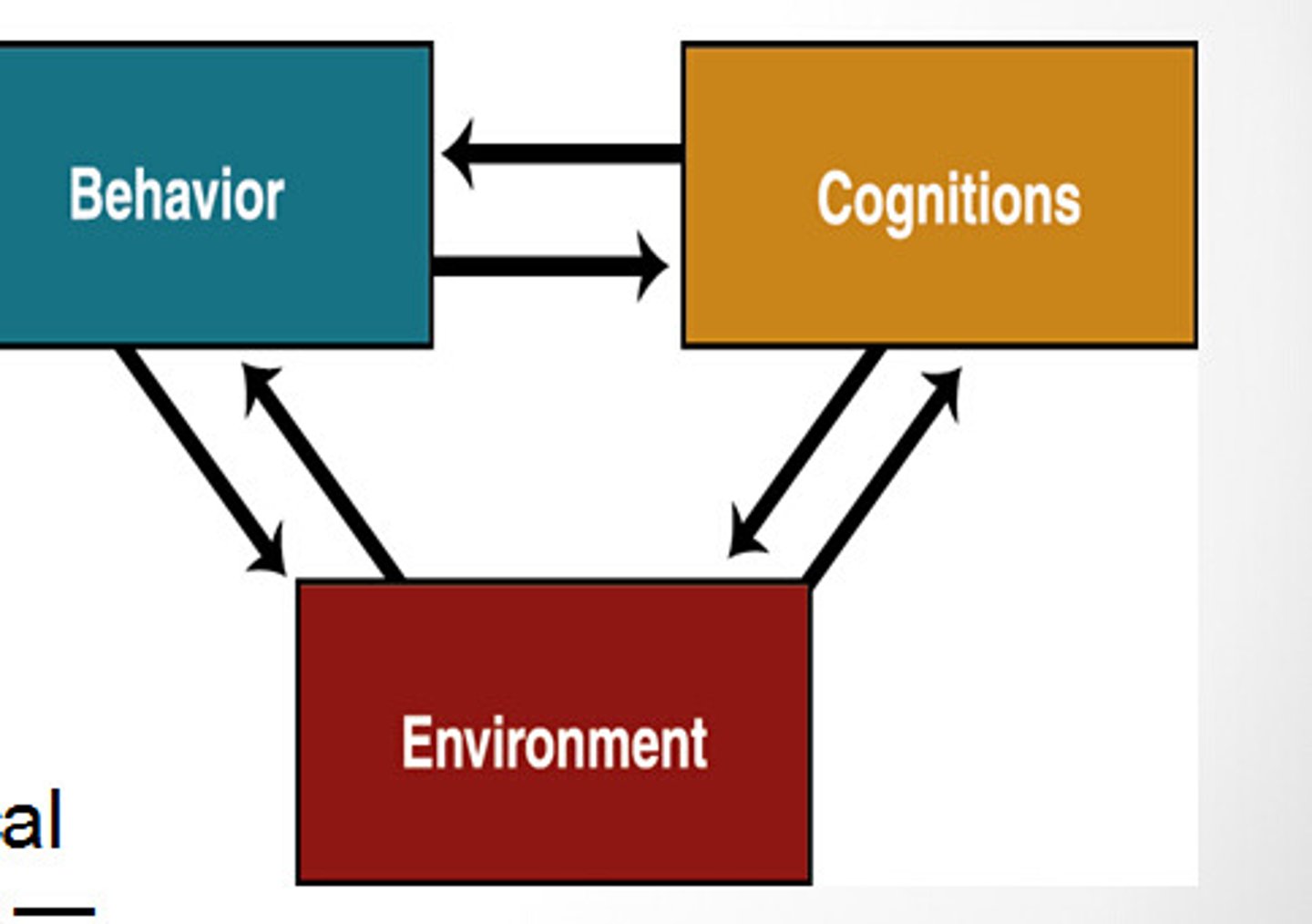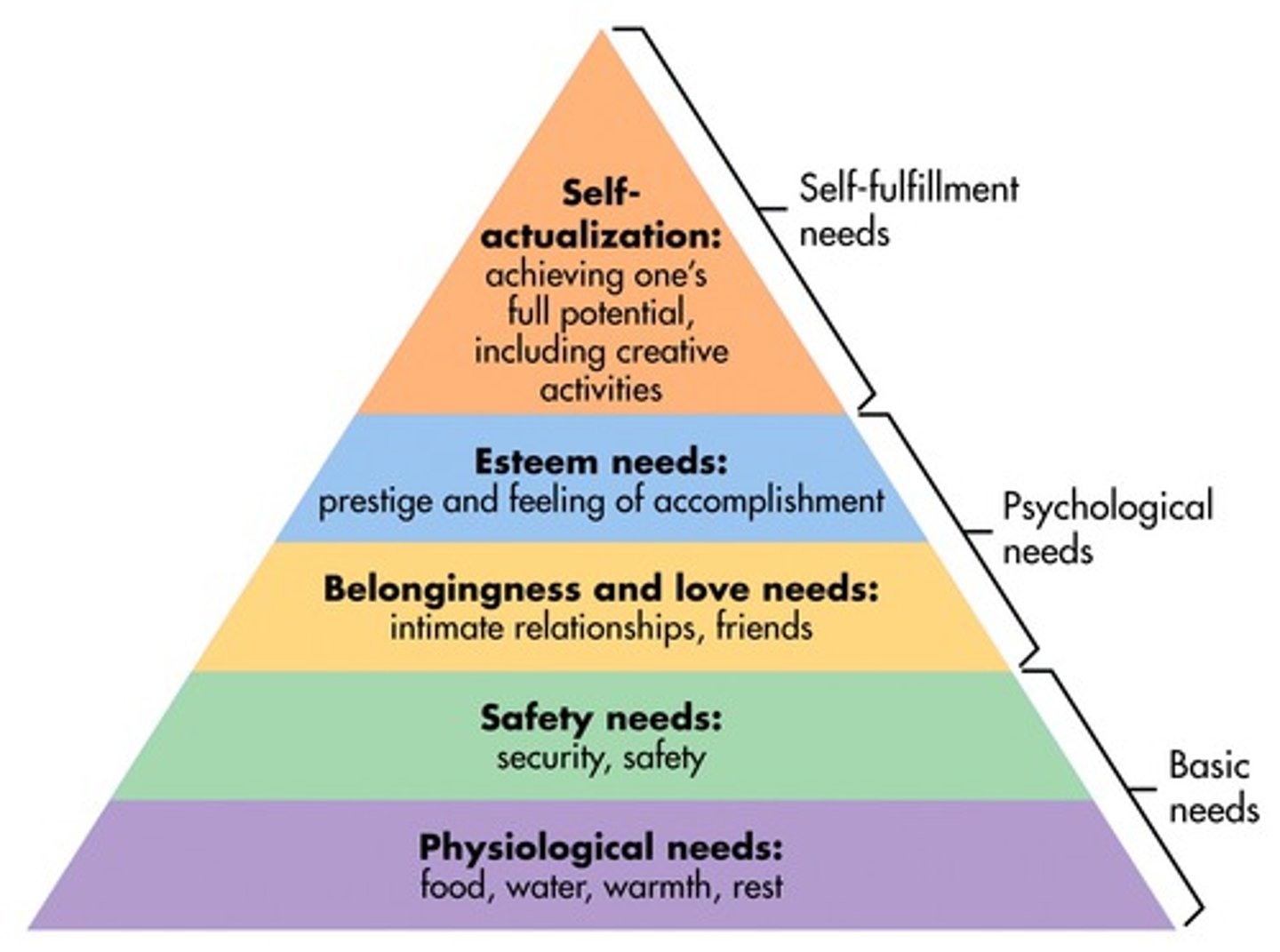AP Psych | Unit 7: Personality, MESH, Positive Psychology
1/96
There's no tags or description
Looks like no tags are added yet.
Name | Mastery | Learn | Test | Matching | Spaced |
|---|
No study sessions yet.
97 Terms
personality
an individual's consistent characteristic pattern of thinking, feeling and acting (By adulthood, they are consistent)
openness
receptive to new ideas, broad interests, abstract and creative
conscientiousness
responsible, organized, detail-oriented
extraversion
outgoing, fun-loving, assertive, talkative
agreeableness
trusting, helpful, warm, empathetic
neuroticism
insecure, anxious, moody, gets angry, emotionally unstable
factor analysis (how are traits assessed?)
statistical technique used to identity clusters of related info
MMPI
the most widely researched and clinically used personality inventory; contains true/false questions that are scores on a scale used to describe a person's mental processes and how they manage stress
only done by a professional
evaluating trait theories (pros and cons)
+: gives us terminology to describe behavior
-: overestimates the consistency of behavior from one situation to another
doesn't explain behavior
doesn't create a unique description for everyone
focus of psychodynamic perspective
unconscious drives/impulses drive personality
Id
primitive, instinctual component of our personality
fulfills our unconscious urges
operates on the pleasure principle
superego (angel)
The superego is the part of your personality that acts like your conscience. It helps you tell right from wrong and guides you to follow rules and moral standards. It's influenced by your family and society. The superego tries to keep your ego in check and makes you feel guilty if you do something you think is wrong.
ego (devil)
Ego is the part of your personality that helps you understand yourself and make decisions. It's the voice inside that says, "This is who I am" and "This is what I want." When balanced, it helps you stay confident; when it's too strong, it can make you overly focused on yourself.
OPERATES ON THE Reality Principle
purpose of defense mechanisms
unconscious reactions that protect a person from emotions such as anxiety and guilt resulting from unconscious conflict (protect the ego)
denial
refusal to recognize or acknowledge a threatening situation
repression
"pushing" threatening or conflicting events or situations out of conscious memory
rationalization
making up acceptable excuses for unacceptable behavior
projection
placing one's own unacceptable thoughts onto others, as if the thoughts belonged to them and not to oneself
reaction formation
a person behaves in the opposite way to what they are actually feeling.
displacement
a person redirects their emotions from the original source of stress to something or someone else that's less threatening.
regression
falling back on child like patterns as a way of coping with stressful situations
sublimation
turning socially unacceptable urges into socially acceptable behavior
TAT (Thematic Apperception Test)
participants respond to vague stimuli in ways that may reveal the subject's unconscious need, feeling, and personality traits and cna be analyzed differently
Rorschach inkblot test
shown a series of inkblots; respond to what you see
humanistic perspective
focuses the unique qualities in humans, especially the freedom to choose their destiny and potential for personal growth
unconditional positive regard
a caring, accepting, nonjudgmental attitude, allows others to develop self-awareness and self acceptance, leading to personal growth
self-actualizing tendencies
the motivation to fulfill one's potential
social-cognitive perspective
people learn from observing others (social learning) and how their beliefs and thoughts (cognition) shape their actions.
reciprocal determinism
how one's behavior, internal cognition, and environment all influence each other

self-concept
individual's perception of themselves, including their abilities, traits, and identity.
(how you see and understand yourself)
self-esteem
our overall feelings of self-worth
self-efficacy
one's beliefs about their ability to succeed (produce expected outcomes) in a new/different situation
motivation
a need or desire that energizes and directs behavior
instinct theory
behavior is driven by innate, biological instincts that are hardwired into us (not observed in nature)
Yerkes-dodson theory
the principle that performance increases with arousal only up to points, the performance decreases
higher arousal benefits simple tasks
moderate arousal benefits complex tasks and leads to optimal performance
drive-reduction theory
we are motivated to maintain homeostasis, explains physiological needs
homeostasis
state of physiological equilibrium or stability
drive
internal state of tension that motivates an organism to behave in a certain way in order to restore homeostasis
self-determination theory
we feel motivated to satisfy our needs for competence, autonomy, and relatedness
intrinsic motivation
desire to engage in a behavior for its own sake
extrinsic motivation
desire to engage in a behavior in order to receive promised rewards or avoid threatened punishments
incentive theory
we are motivated to obtain desirable stimuli or avoid negative stimuli
ex: money, promotion, food
arousal theory
people are motivated to maintain their optimal level of arousal (different for everyone)
sensation seeking theory
individuals levels of desire for new and intense experiences vary (overarching theory)
experience seeking
a preference for new and unconventional experiences
ex: traveling, meeting new people, or trying new foods
thrill/adventure seeking
a desire to engage in physically risky activities
ex: skydiving, bungee jumping, or fast driving
disinhibition
the desire to engage in impulsive, carefree behavior
ex: partying and socializing in uncontrolled situations
boredom susceptibility
a tendency to become easily bored with routine activities and a craving for constant change
maslow's hierarchy
people are motivated to fulfill certain needs that are arranged in a hierarchy; the lower the needs on the hierarchy must be fulfilled before someone can be motivated by the need next on the hierarchy

Ghrelin
realased by empty stomach- stimulates appetite; causes stomach contractions (growling)
leptin
realased from fat cells, send safety signal to the brain
external factors
what are some of the environmental factors that influence eating behaviors?
presence of food, time of day, social gatherings
james-lange
the physical reactions of the body determine what emotion we experience (each emotion has a specific physical reaction)
physical reactions ------> emotion
cannon-bard
the brain determines what emotion we experience. the physical reaction and emotion occur simultaneously
brain ---------> emotion and physical
schater-singer
the physical reactions PLUS our appraisal of the situation determine what emotion we express
physical and cognitive ------> emotion
broaden-and-build theory
when you experience positive emotions, you tend to broaden awareness and encourage building new actions and thoughts. negative emotions reduce awareness
universal emotions (6)
happiness, sadness, surprise, fear, disgust, anger
display rules
a social group or culture's norms that distinguish how one should express oneself
health psychology
the subfield of psychology that explores the impact of psychological, behavioral, and cultural factors on health and wellness
stress
the process where we perceive and respond stressors that we beileve are threatening or challenging
eustress
positive form of stress, benefiting health, motivation, performance, and wellbeing
distress
negative stress harming health, motivation, performance, and wellbeing
acute stressors
threatening events that have a relatively short duration and a clear endpoint
(most types of stress)
chronic stressors
threatening events that have a relatively long duration and no readily apparent time limit
catastrophes
unpredictable, large-scale disasters that create a tremendous need to adapt and adjust
ex: natural disasters, floods, droughts, etc.
approach-approach conflict
a decision must be made between two (or more) attractive options
avoidance-avoidance conflict
a decision must be made between choose between two unattractive options
approach-avoidance conflict
A decision must be made between a single option with both attractive and unattractive aspects
fight-or-flight response
physiological reaction to threats in which the autonomic NS mobilizes the organism for attacking (fight) or fleeing (flight) an enemy
general adaptation syndrom (GAS)
theory that describes the body's physiological response to stress. 3-stage process that can occur in response to any type of stress.
alarm reaction. (phase 1)
the initial shock of the stressor, short lived and intense, sympathetic NS working hard
fight or flight
resistance (phase 2)
provides the energy we need to fight the stressor
Sympathetic NS engaged to get us through stressor (not as much as in the alarm reaction)
exhaustion (phase 3)
continual depletion of energy resources= suppression of immune system = get sick
tend-and-befriend
under stress, people (especially women), may respond to stress by nurturing themselves and others (tending) and seeking social support (befriending)
appraisal
the cognitive interpretation of the stressor
(how someone evaluates a situation and determines their emotional response)
type A personality
personality type that describes people who are competitive, driven, hostile, and ambitious
Type B personality
Personality characterized by relatively relaxed, patient, easygoing, amicable behavior.
locus of control
an individuals belief about the extent to which their actions influence the outcomes/environment
internal locus of control
believe that their actions DO have an impact on the outcome/environment
external locus of control
believe that their actions DO NOT have an impact on the outcome/environment
fixed mindset
belief that intelligence, talent, and other qualities are innate and unchangeable
growth mindset
belief that intelligence, talent, and other qualities can be developed with effort and practice
problem-focused coping
taking direct action to solve or manage the source of stress
emotion-focused coping
managing the emotional response to the stressor
different because it is about not about changing the problem
positive psychology
the study of human strength and well-being
subjective well-being
perceived satisfaction with life (how happy do you think you are?)
objective well-being
physical health indicators, income living conditions, etc.
resilience
the ability to adapt well in challenging life experiences, such as trauma, tragedy, or significant stress
gratitude
recognizing and appreciating the positive aspects of life and the kindness of others
wisdom
cognitive strengths that involve acquiring and using knowledge
courage
emotional strengths that involve the exercise of will to accomplish goals in the face of opposition
humanity
interpersonal strengths that involve tending and befriending others/
justice
civic strengths that underline healthy community in life
temperance
strengths that protect against excess (self-control/resistant)
transcendence
strengths that forge connections to the larger universe and provide meaning
satisfaction
feeling that one has accomplished a goal during a certain period of time
post-traumatic growth
positive psychological changes as a result of struggling with highly challenging life circumstances
Ex: A cancer survivor may experience posttraumatic growth by developing a renewed sense of life's value, engaging in advocacy work, or deepening relationships with loved ones, illustrating how adversity can lead to profound personal growth and a positive outlook on life.